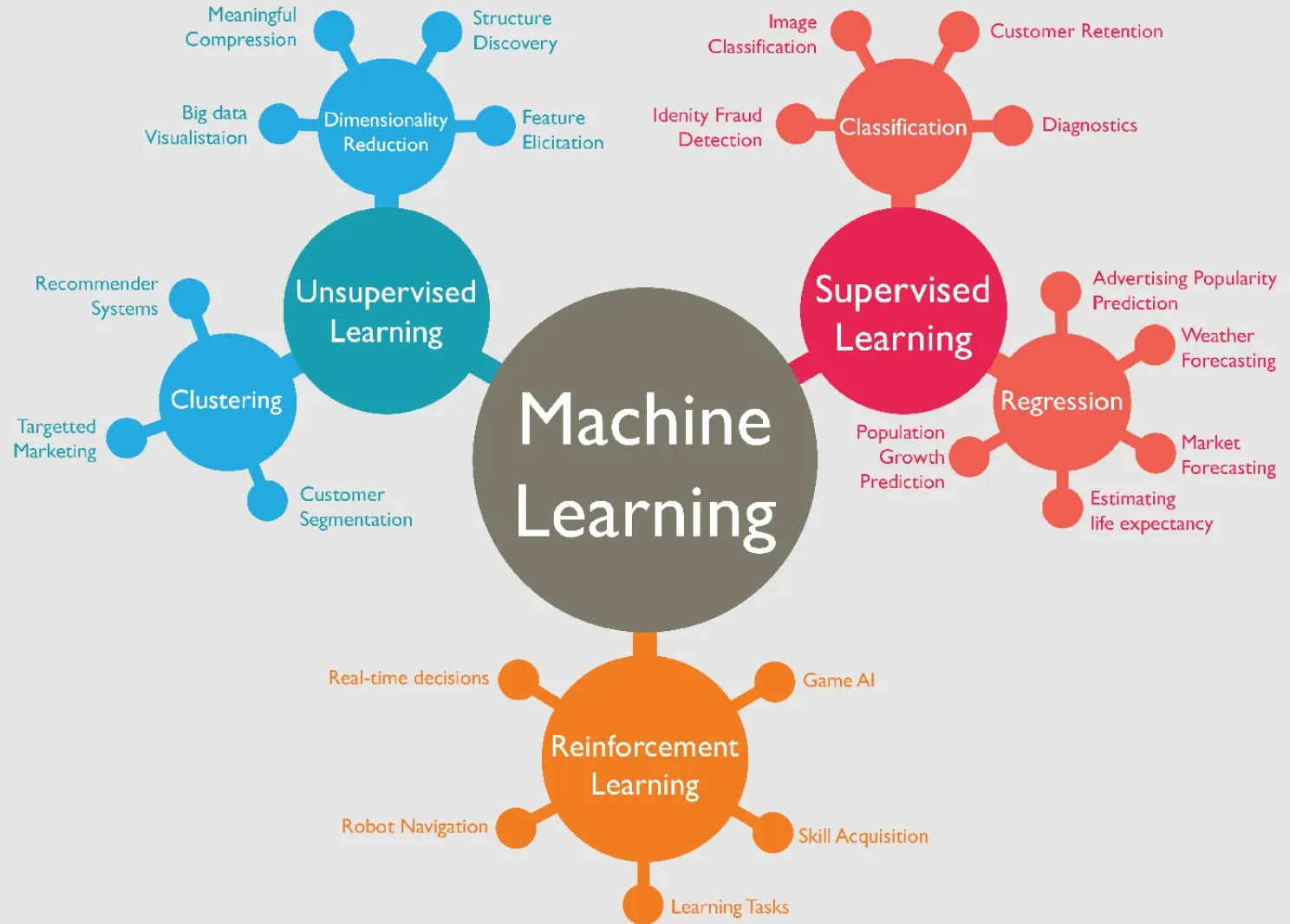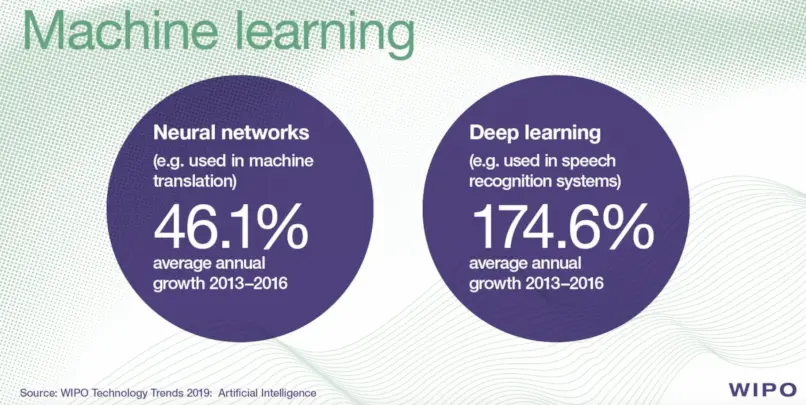What are Machine Learning Methods?
Machine Learning Methods refer to a collection of dedicated algorithms used for extracting knowledge from data and leveraging it to make data-driven predictions or decisions. Consider it like a detective, collecting evidence (data), drawing insights, and predicting outcomes.
There are three commanding types of machine learning methods, all of which interact with data differently:
Supervised Learning
Just as a student learns under the guidance of a tutor, supervised learning algorithms exploit labeled data to make predictions. For instance, based on past weather attributes and their respective outcomes, we can predict if it will rain tomorrow.
Unsupervised Learning
Consider a toddler, curious and uninstructed, interacting with his surroundings - this is close to how unsupervised learning behaves. These algorithms use unlabelled data and unravel hidden patterns. A good example is customer segmentation in marketing analytics.
Reinforcement Learning
Think of a dog learning new tricks based on rewards. Similarly, a reinforcement learning algorithm learns by relying on a reward system, refining its decisions to achieve the maximum reward. Think of a chess game where the algorithm learns the best moves through repeated play.

Primary Application Areas
Machine Learning methods find applications that shape our daily digital interactions, including:
- Predictive analytics is used to foresee customer churn in telecommunications.
- Image and speech recognition, enabling technology like Google Photos or Siri.
- Anomaly detection is like detecting fraudulent transactions in banking.
- Recommendation systems like Netflix and Amazon's "Recommended for You".
Importance
With their unique ability to decipher, learn, and improve tasks from data, Machine Learning Methods are the fountainheads of AI applications, crucial for advancements in the technology industry.
Why do we need Machine Learning Methods?
Let’s explore the reasons why Machine Learning Methods have become an invaluable tool in modern digital ecosystems.
Efficiency in Data Handling
With an explosion of data in today's world, manually processing this vast ocean is near impossible. Machine Learning methods can parse massive amounts of data with ease and extract meaningful insights.
Accuracy and Precision
Machine Learning's strength is its accuracy and precision improved over time and experiences. ML algorithms continue to grind data, identifying key indicators leading to valid predictions.
Automation
Machine Learning algorithms, once trained, can make informed decisions without the need for human intervention. This contributes to the rise of automated systems - self-driving cars, for instance.
Adaptability
Machine Learning methods are built on the principle of learning, adapting, and improving. A spam detection algorithm, for instance, trains itself to recognize new spam types over time.
Who: Key Players in the Field of Machine Learning
Who is shaping and being shaped by Machine Learning Methods?

Data Scientists
As the wielders of these methods, Data Scientists apply these methods to extract meaning from the chaos of data.
Tech Organizations
Technology giants like Google, Facebook, and Amazon are not just notably applying Machine Learning but also driving its research and development.
Academia
Universities worldwide serve as the thinktank for theoretical and architectural developments in Machine Learning methods.
Governments
Government bodies harness Machine Learning to drive initiatives in public welfare by improving service delivery, crime detection, and more.
When: Evolution of Machine Learning Methods
The growth of Machine Learning methods has paralleled the progress of computer science.
Ancient History: Linear Regression
Linear Regression, a statistical method, was used to represent relationships between variables mathematically in the early 19th century. This rudimentary method can be considered the precursor to modern Machine Learning.
Modern Adaptation: Decision Trees
Through the 1980s, Decision Trees emerged, providing a more clear, structured approach to decision-making and prediction. It was an early stage approach to thinking 'machine-like'.
Machine Learning Boom: Neural Networks
Neural Networks, often associated with deep learning, directly mimic the human brain to process complex data structures. The advent of big data in the 2010s accelerated the prominence of Neural Networks.
Future: Generative Adversarial Networks
Generative Adversarial Networks (GANs) are viewed as the future of Machine Learning. GANs learn to recreate patterns within input data, paving the way for innovations like creating photo-realistic images from descriptions.
Where: Industries Using Machine Learning Methods
Machine Learning isn’t confined to one field. It’s transforming businesses, right from personalized shopping experiences to autonomous vehicles.

Healthcare
In healthcare, ML methods help in accurate disease prediction, drug discovery, and patient care. For example, ML algorithms can predict whether a tumor is malignant or benign based on past patient data.
E-commerce
For e-commerce businesses, personalized product recommendations that you get are powered by ML. It studies your previous purchases, browsing history, and similar user patterns to suggest products of your liking.
Transportation
Machine Learning plays a pivotal role in self-driving technology. It helps in mapping routes, avoiding obstacles, and traffic management.
Entertainment
Our favorite streaming platforms, Netflix and Spotify, make use of ML algorithms to curate and show content that we may enjoy.
How: Implementing Machine Learning Methods
Let’s navigate the journey a Machine Learning model goes through.
Data Collection
The first step involves the collection of data which is often raw and uncategorized.
Data Preparation
In this stage, the collected data is processed and cleaned. It includes handling missing values and outliers and ensuring the data is fit for a model.
Model Training
A specific ML algorithm is then applied to this cleaned data. It's like teaching rules to the model based on the given data.
Model Evaluation
The model's performance is evaluated based on specific metrics. These could include parameters like accuracy and precision.
Best Practices For Machine Learning Methods
These best practices will set you on the right path to designing machine learning models that perform well and generalize effectively on unseen data. Remember, the goal is not just to create a model but to solve a problem.

Choose the Right Algorithm
Not all algorithms are made equal. The appropriateness of a machine learning algorithm largely depends on the data you have and the problem you aim to solve. Take your time to analyze your data, and choose the algorithm that best fits your needs.
Preprocess Data Adequately
Data preprocessing is foundational in machine learning. A common rule of thumb is "garbage in, garbage out." Clean your data, handle missing values, and manage outliers to ensure optimal performance of your model.
Split Data Correctly
Ensure that you split your dataset into training and testing sets correctly. Typically, 70-80% of the data is used for training, and the rest is used for testing. Use methods such as cross-validation to effectively gauge the performance of your model.
Go Simple before Complex
Start with simpler models and gradually escalate to complex ones only if needed. Simpler models are easier to understand and interpret and are often sufficient for the task.
Avoid Overfitting
Overfitting is a common pitfall in machine learning, where your model performs well on the training data but poorly on unseen data. Employ strategies such as regularization, early stopping, and using simpler models to avoid overfitting.
Perform Feature Selection
Feature selection is crucial to improve model performance. Too many irrelevant features can lead to high computational cost and overfitting. Use techniques like correlation analysis or recursive feature elimination to select significant features.
Evaluate Model Thoroughly
Evaluate your model using appropriate metrics. Accuracy is not always the best metric, especially for imbalanced datasets. Consider using precision, recall, F1-score, or area under the ROC curve (AUC-ROC) depending on the problem at hand.
Keep Iterating
Machine learning is not a one-and-done task. Continually review and refine your model as new data comes in. Treat your model as a living system that needs constant updates and care to perform optimally.
Frequently Asked Questions (FAQs)
What separates supervised learning from unsupervised learning?
Supervised Learning, as the name hints, needs supervision in the form of labelled data — we know both the input and the desired output. In stark contrast, Unsupervised Learning involves learning from raw, unlabelled data.
What is batching in machine learning?
Batching refers to the process of grouping data or tasks into batches or batches for processing or execution together. In machine learning and deep learning, batching is commonly used to improve computational efficiency by processing multiple data points simultaneously, leading to faster training and inference times.
Could you provide an example of reinforcement learning?
One notable example of Reinforcement Learning is Google’s DeepMind. It was taught to play several Atari games and, in many cases, the AI learned to play them at an expert level. It achieved this without any prior knowledge or insight, relying purely on its ability to pick up patterns over a period of trial and error.
Why does data have monumental significance in machine learning?
Machine Learning and Data are two sides of the same coin. Data serves as the knowledge base from which ML algorithms draw insights. The quality, diversity, and volume of data directly influence how well an ML model can be trained. The wider and more diverse the data, the more scenarios the model is prepared for.
Could you briefly explain what a neural network is?
A neural network in Machine Learning is inspired by the human brain. It uses a set of interconnected nodes or "neurons" arranged in layers to process data. It adapts and learns much like a human brain does: connections between nodes are strengthened or weakened depending on whether the generated output is correct or incorrect.
What kind of impact is machine learning having on real-world industries?
Machine Learning is revolutionizing industries. In healthcare, it's assisting with early detection of diseases and enhancing patient care. In finance, ML-based algorithms are making fraud detection highly accurate. Supply chain, transportation, and even agriculture sectors are leveraging ML for optimal and informed decision-making. Without a doubt, Machine Learning is becoming a sizable driving factor across all domains.

